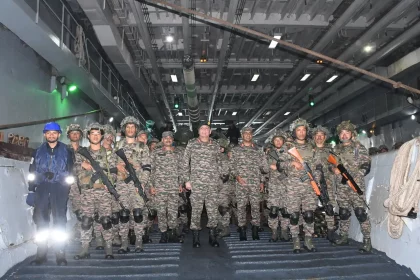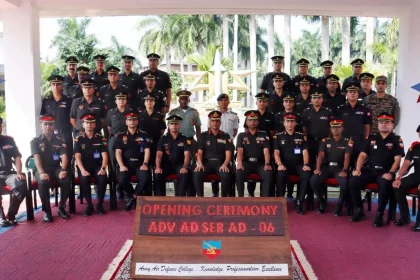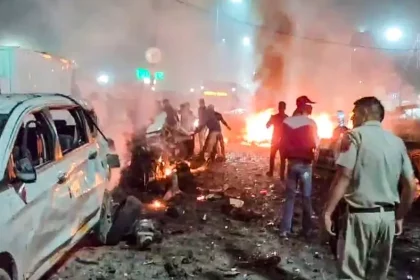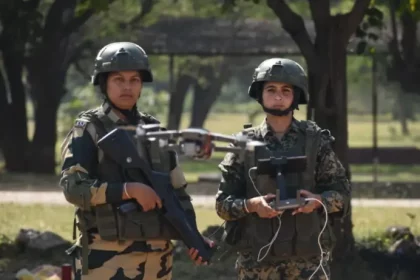Lt Gen Dhiraj Seth Reviews Joint Sea–Land Operations Onboard INS Jalashwa
Indian Army, Navy and Air Force demonstrate seamless tri-service synergy and amphibious assault capability.
Advance Air Defence Course Commences at Army Air Defence College, Gopalpur
Officers from India, Namibia, and Nepal train in advanced tactics and technologies to counter aerial threats.
SSP Ajai Singh Interacts with IMA Cadets, Emphasises Cyber Safety and Internal Security Cooperation
Bridging Cyber Awareness and Security Synergy: IMA Cadets Engage with Dehradun Police.
Navy Chief Admiral DK Tripathi Embarks on Week-Long Visit to the United States
Navy Chief To Hold High-Level Talks with USINDOPACOM and Pacific Fleet Commanders on Strengthening Indo-Pacific Cooperation.
Government Declares Red Fort Car Blast a Terrorist Attack, Passes Resolution Condemning ‘Heinous Act’
PM Modi Chairs CCS Meeting; NIA Launches Full-Scale Probe into JeM Link.
BSF Raises First All-Female ‘Durga Drone Squadron’ at Gwalior Academy
A Historic Step Towards Gender Empowerment and Technological Modernisation in Border Security.






